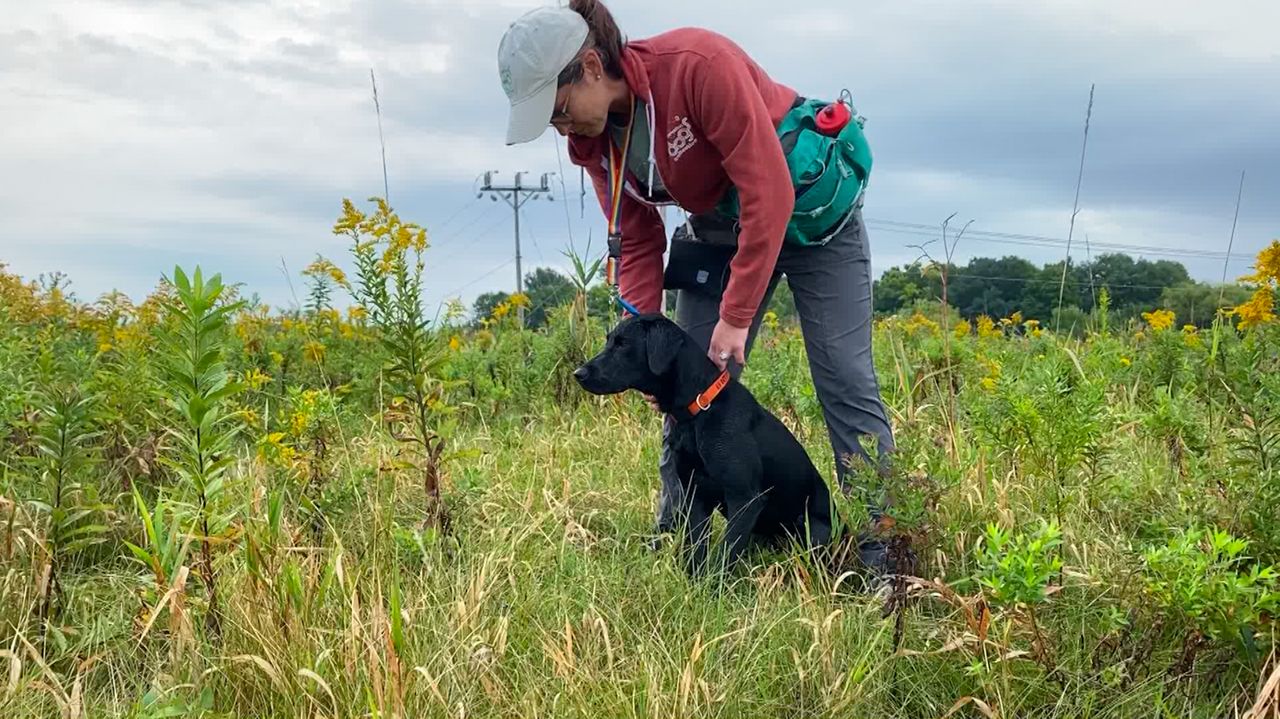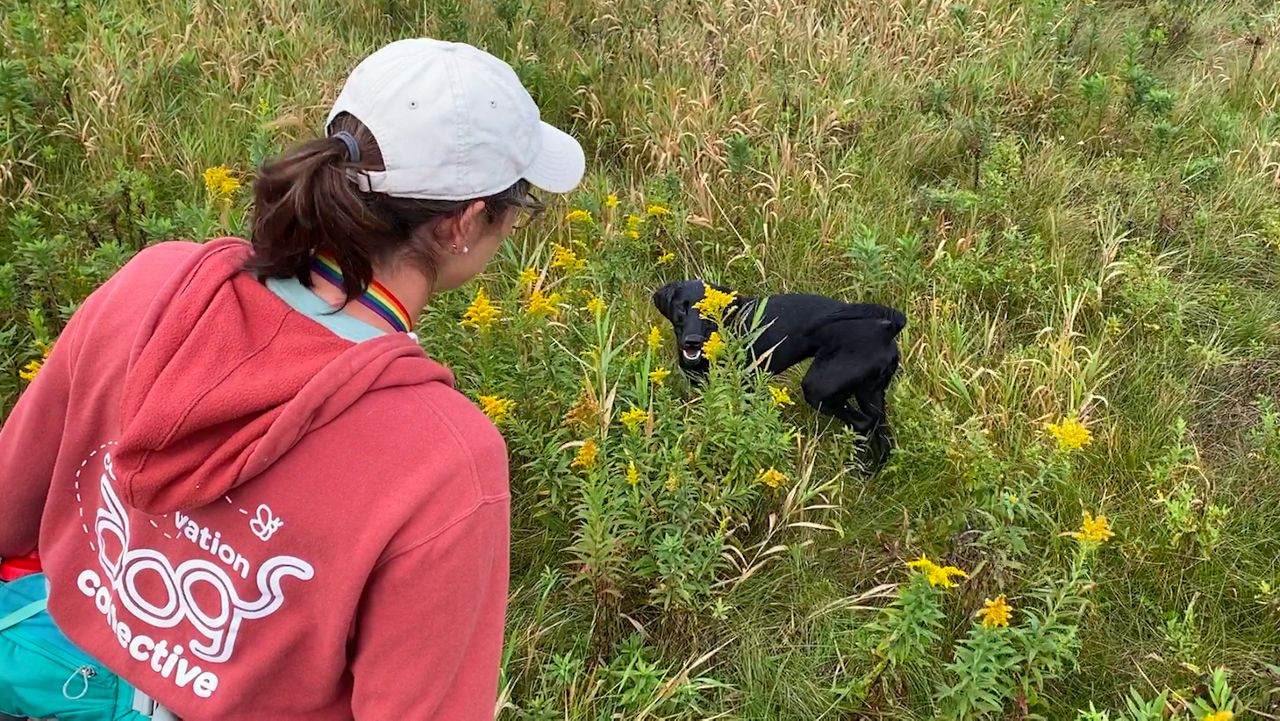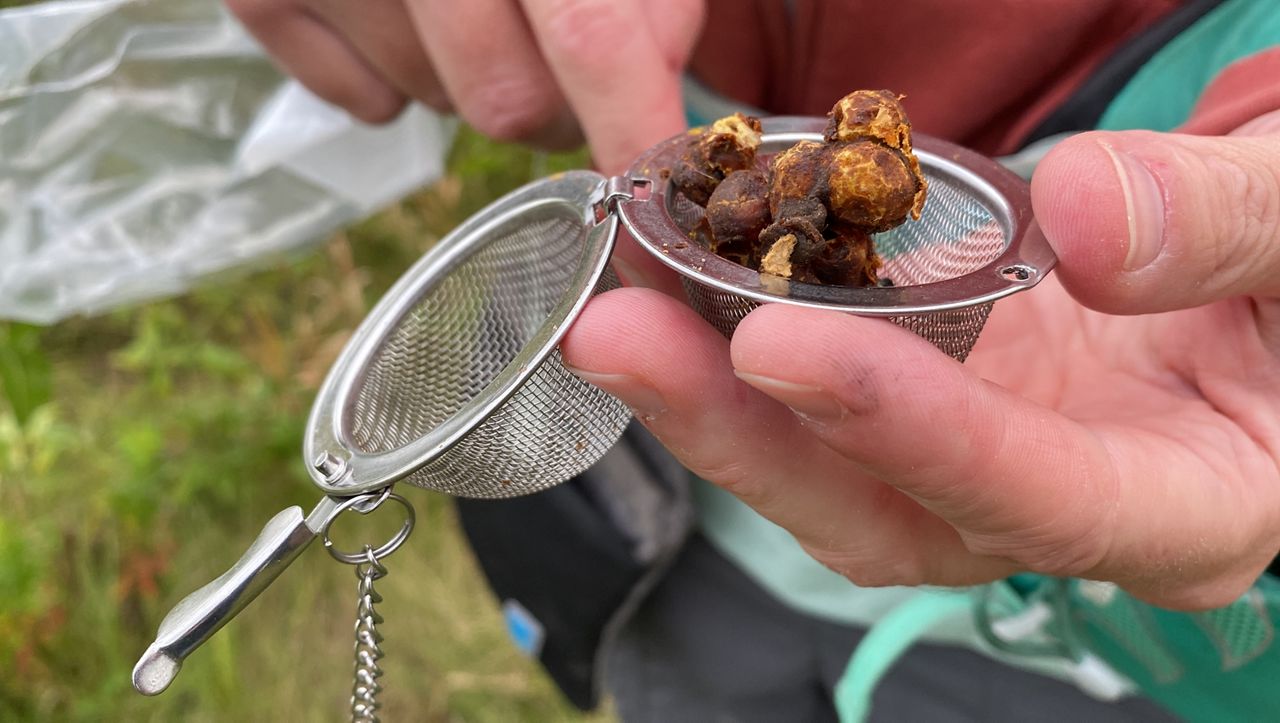MILWAUKEE — When researchers wanted to collect data on wild bumble bee nests this past summer, they turned to man’s best friend to help sniff them out.
What You Need To Know
- Bumble bee nests are difficult to locate
- The dogs help sniff out nests of 20 species of bumble bees
- They are used to locate invasive species as well as turtles
One is affectionately named Betty White, and her partner in crime is Ernie. The two spent the summer sniffing out bumble bee nests for researchers.
“Nests, in general, are just super hard for humans to find by themselves. Any valuable find for the dogs is helpful for the researchers,” said Laura Holder of the Conservation Dogs Collective.
Their slogan is “Making a Snifference.”

The dogs are trained to locate Wisconsin’s approximately 20 species of wild bumble bees.
On a recent training day in Wauwatosa, Holder hid parts of nests for the dogs to locate.
“We train with different volumes of the bumble bee nest material. Out in the wild, there could be a tiny little nest or a really large nest,” explained Holder.
A dog’s superior sense of smell makes it possible to locate nests and collect data on these important pollinators.
“These dogs are super impressive. When they find a nest, they know exactly where it is,” said Jade Kochanski, University of Wisconsin-Madison Ph.D. graduate student.

With a keen interest in pollinators, Kochanski witnessed the dogs working this summer.
“If we can increase the efficiency and accuracy of finding bumble bee nests, that can help us answer research questions,” explained Kochanski. “Are there species-specific differences in their nesting preferences? Are prairie restorations helping them?”
The dogs love to run and sniff, but their contributions are invaluable.
“Finding the correlation between where they are foraging to where nests are found is a critical piece of information that’s missing right now,” said Holder.

Sniffing around looking for bees may sound like you’re asking for trouble, but problems are rare, Holder said. She carries Benadryl just in case.
“Bumble bees, you have to make them upset for you or the dog to get stung,” said Holder.
The dogs can detect more than just bee nests. They can also help locate invasive species like the New Zealand mud snail.
“We just had a team that came back from Iowa last week. They were doing ornate box turtle surveys. Wood turtles are another thing here in the area that are of great importance,” said Holder.
The practice is an emerging field that continues to provide useful data for scientists — there’s no doubt it’ll also keep the valuable noses of Ernie and Betty White quite busy.



